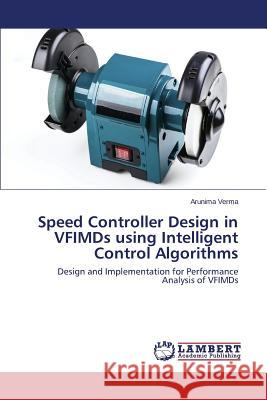Speed Controller Design in VFIMDs using Intelligent Control Algorithms » książka
Speed Controller Design in VFIMDs using Intelligent Control Algorithms
ISBN-13: 9783659792663 / Angielski / Miękka / 2015 / 216 str.
Speed Controller Design in VFIMDs using Intelligent Control Algorithms
ISBN-13: 9783659792663 / Angielski / Miękka / 2015 / 216 str.
(netto: 327,59 VAT: 5%)
Najniższa cena z 30 dni: 344,78
ok. 10-14 dni roboczych
Bez gwarancji dostawy przed świętami
Darmowa dostawa!
This text book is priceless for those researchers and engineers who are enthusiastic in carrying out research in designing of speed controller of Variable Frequency Induction Motor Drives (VFIMDs) which are the vertebrae of the industrial world. The chapters in the book have considered the various Artificial Intelligence (AI) techniques in order to properly design and tune the speed controller for DFOC and DTC based induction motor drives. The AI based controllers have given improved dynamic response of the two VFIMDs for disturbance rejection capability, robustness and stability under various dynamic conditions. Moreover, this book has given an insight into the quantitative and qualitative comparisons of transient performance parameters of VFIMDs controlled by AI (i.e. FL, ANFIS, ANN, GA and MOGA) techniques. The comparisons of the AI based techniques with the conventional one, and those among themselves facilitate need based selection of VFIMDs for various applications. The qualitative comparison has also been carried out to highlight the pros and cons of the use of AI techniques in the designing and tuning of the speed controllers.
This text book is priceless for those researchers and engineers who are enthusiastic in carrying out research in designing of speed controller of Variable Frequency Induction Motor Drives (VFIMDs) which are the vertebrae of the industrial world. The chapters in the book have considered the various Artificial Intelligence (AI) techniques in order to properly design and tune the speed controller for DFOC and DTC based induction motor drives. The AI based controllers have given improved dynamic response of the two VFIMDs for disturbance rejection capability, robustness and stability under various dynamic conditions. Moreover, this book has given an insight into the quantitative and qualitative comparisons of transient performance parameters of VFIMDs controlled by AI (i.e. FL, ANFIS, ANN, GA and MOGA) techniques. The comparisons of the AI based techniques with the conventional one, and those among themselves facilitate need based selection of VFIMDs for various applications. The qualitative comparison has also been carried out to highlight the pros and cons of the use of AI techniques in the designing and tuning of the speed controllers.











